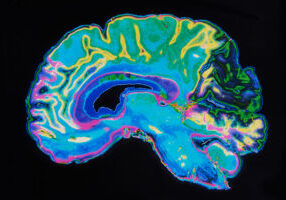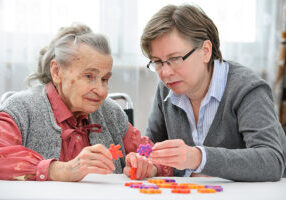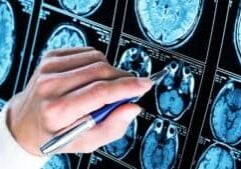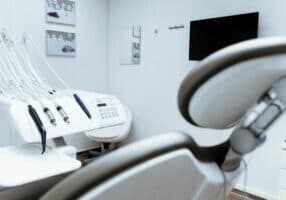Dementia is a broad term for changes in the brain which affect memory, thinking, language and behavior. Multiple diseases cause these symptoms. Here we will discuss the main types of dementia, their symptoms, causes, and differences. Understanding of the brain changes producing the symptoms can improve the level of care and compassion provided by their care partners.
The impact of dementia extends beyond the individual, affecting family dynamics, relationships, and daily life. Recognizing these unique challenges is key to offering effective support and care.
Key Takeaways
- Alzheimer’s disease is the most prevalent cause of dementia, typically starting with memory loss and leading to significant cognitive decline; early detection is possible through cerebrospinal fluid, blood tests and scans but there is no cure, yet.
- Lewy Body dementia has distinctive visual hallucinations and often coincides with Parkinson’s disease which significantly impairs mobility. Appropriate medications can improve physical abilities, mood , and assist cognition.
- Vascular dementia arises from impaired blood flow to the brain, can occur following cardiac issues and strokes; managing cardiac risk factors is essential to slow the progression of future brain impact. Its presentation varies on the location of low blood flow in the brain cells.
- Frontotemporal dementia presents with personality changes and communication difficulties, with memory skills are often retained. Typical onset is between 40 and 65 years old. An accurate diagnosis can be complex; early and precise diagnosis is vital for effective understanding and care.
Alzheimer’s Disease
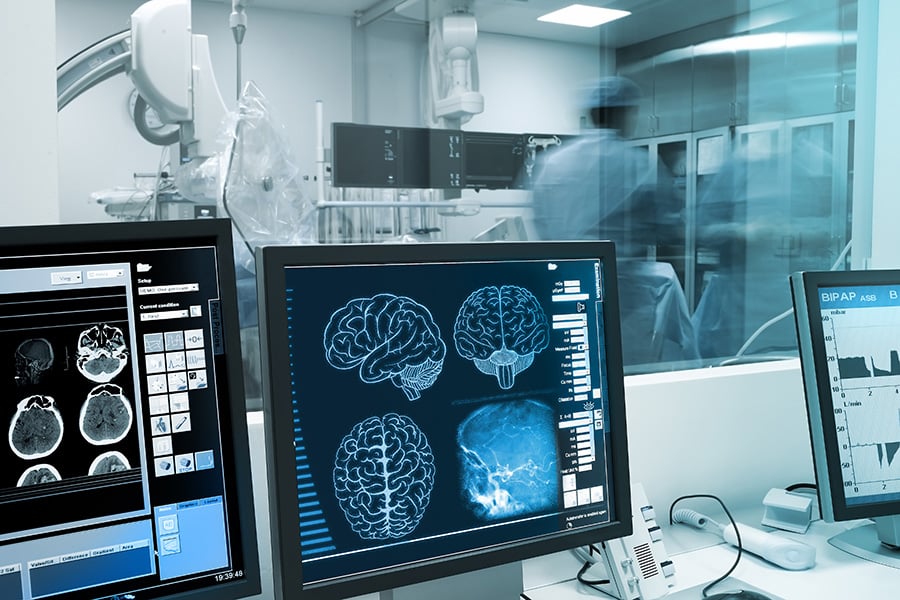
Alzheimer’s disease is the most common type of dementia, claiming 60-80% of the dementia diagnoses and affecting millions globally. This brain disorder impacts memory and cognitive functions, over time leading to severe disorientation and difficulty with basic tasks. The initial symptom can be memory loss, yet impairments in thinking, judgement, and language are often also present.
As the disease progresses a caregiver will be needed to assist with the safe performance of the activities of daily life.
Detecting Alzheimer’s disease early is possible via testing the Cerebrospinal fluid and testing the blood for certain biomarkers. These diagnostic methods enable the earlier interventions of new medicines which potentially slows the progression of this disease. There is still no cure, but doing what we can early in the disease will improve the quality of life for all those impacted.
Vascular Dementia
Vascular dementia is another common type of dementia, resulting from cardiovascular diseases. This condition arises when blood flow to the brain is impaired, damaging the brain tissue. High blood pressure, high cholesterol, strokes, and other cardiac issues are significant risk factors.
The cognitive decline can affect thinking skills, daily decision-making, memory and language skills. Diagnosing vascular dementia typically involves cognitive tests and brain imaging, which help identify the extent of brain damage. The presentation of symptoms in Vascular dementia can vary widely and benefits from a unique treatment plan.
Although there is no cure, managing cardiovascular risk factors can help mitigate the progression of dementia symptoms.
Lewy Body Dementia
Lewy body dementia is characterized by the presence of Lewy bodies in the brain and includes two forms: dementia with Lewy bodies and Parkinson’s Disease Dementia. This condition often presents with the distinctive symptom of visual hallucinations which are realistic and detailed. Cognitive fluctuations are also common, causing unpredictable changes in mental functioning that can impact attention and alertness.
Mood changes, such as depression and anxiety, are prevalent in individuals with Lewy body dementia, affecting their overall well-being. Sleep disturbances, including REM sleep behavior disorder where individuals act out their dreams, further complicate their condition.
These symptoms collectively contribute to a challenging and often distressing experience for both patients and caregivers although proper medications can assist with lessening some symptoms. There is yet no cure.
Frontotemporal Dementia
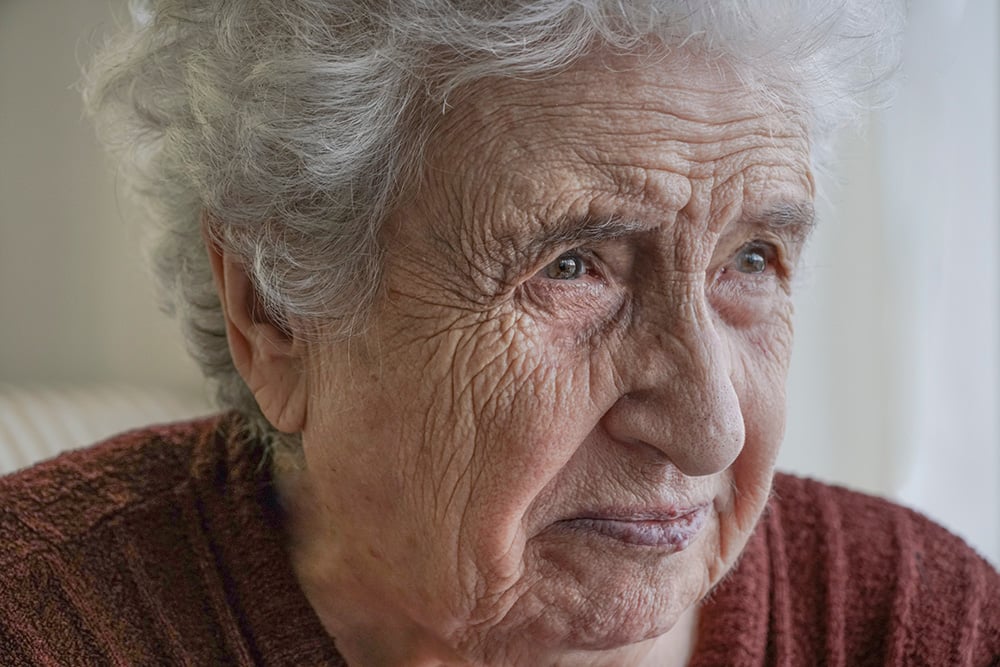
.Frontotemporal dementia primarily affects neurons in the frontal and temporal lobes, leading to atrophy in these areas as the neurons die. The frontal lobe controls executive functioning (logic reasoning, problem solving, and emotional regulation) This type of dementia manifests in various ways, including unusual behaviors, emotional disturbances, and difficulties with communication and movement, however memory often remains intact until later stages. This disease emerges at 40 -65 years old.
Behavioral variant frontotemporal dementia is notable for significant changes in personality such as impulsivity and lack of empathy.
Primary progressive aphasia is a variant of frontotemporal dementia that affects language abilities, leading to difficulties in speaking, reading, and understanding. Genetic factors can play a role, with specific genes linked to increased risk for familial forms of the disorder
Other diseases associated with frontotemporal dementia, such as Corticobasal Syndrome and Progressive Supranuclear Palsy, cause significant movement issues like apraxia and movement control difficulties.
Frontotemporal dementia is challenging to diagnose accurately due to overlapping symptoms with Alzheimer’s disease and mood disorders. Precise diagnosis is essential for effective management, emphasizing the need for awareness and understanding of this dementia type.
Mixed Dementia
Mixed dementia refers to a condition where a person experiences symptoms of more than one type of dementia, making its diagnosis and management particularly complex. This most often involves a combination of Alzheimer’s disease and vascular dementia, and occurs at ages greater than 75. Cognitive tests and brain imaging help in diagnosing mixed dementia and many cases are discovered at autopsy. Some sources report 1 in 10 dementia diagnosis are actually of the mixed type.
Young Onset Dementia
Young onset dementia ( previously termed early onset dementia) is diagnosed in individuals under 65, and occurs in 119 per 100,00 worldwide. Often misdiagnosed due to dementia being unexpected at this age , initial symptoms might involve difficulty concentrating, and trouble completing familiar tasks. They may not initially have memory loss. Instead, they may face challenges with movement, coordination, and balance.
Most people with Young Onset Dementia have the Alzheimer’s type, and may have a familial history of the disease. Several gene mutations have been identified which can cause the disease as early as 30 years old. People with Down syndrome also more likely to have Alzheimer’s starting in their 50s progressing to 80% diagnosed by age 65.
Understandably, dealing with Young Onset Dementia will significantly impact work, finances and families, many with young children yet in the home. An early and accurate diagnosis facilitates planning for care and fosters understanding of the cognitive and physical changes.
Posterior Cortical Atrophy
Posterior cortical atrophy primarily affects brain cells in the rear section of the brain, which is essential for processing visual and spatial information. Individuals with this condition face challenges with vision in reading, distance judgment, and recognizing objects or familiar faces. Although it is linked to Alzheimer’s disease, posterior cortical atrophy presents differently with its specific visual spatial symptoms, making its diagnosis and management unique. Its onset is between 50 -65 years old
Alcohol Related Dementia
Alcohol-related dementia is linked to chronic alcohol abuse and Wernicke-Korsakoff syndrome. This syndrome, caused by vitamin B1 deficiency, presents with symptoms such as confusion, memory problems, and coordination issues. Recognizing the link between alcohol abuse and dementia is key for prevention and effective management.
Huntington’s Disease
Huntington’s disease is a hereditary disorder that leads to both motor and cognitive decline, typically manifesting between ages 30 and 50. The disease progresses through stages, with initial symptoms related to movement difficulties, followed by changes in behavior and cognitive impairment. When one parent has Huntington’s , their child has a 50% chance of inheriting the causative gene mutation. Currently, there is no cure for Huntington’s disease, although symptom management options exist.
Additional Types of Dementia
Other lesser known yet equally debilitating types of dementia include those caused by infections, repetitive trauma and structural issues. Rapidly progressive Creutzfeldt-Jakob ( or “mad cow”) disease comes from eating infected beef. Chronic Traumatic Encephalopathy (or CTE) is common in prior boxers and football players after suffering years of concussions in their sport. Normal Pressure Hydrocephalus is a build up of excess spinal fluid in the brain putting pressure on the its tissues. The cause of this is unknown however relieving the fluid’s pressure can alleviate some of the dementia symptoms.
Common Symptoms of Dementia

Over 100 diseases can cause the symptoms of dementia. Dementia symptoms vary significantly based on the area of the brain affected. Common symptoms include memory loss, prominent in Alzheimer’s disease, confusion regarding time and place, and poor judgement in previously familiar situations. People may struggle to follow conversations or recall specific words, especially in the early stages. Mood fluctuations, such as increased emotional sensitivity or withdrawal, and a strong resistance to change in routine are also common.
Many of the types of dementia can be recognized by its specific symptoms. Patients with frontotemporal dementia may face challenges in work-related tasks like organization and planning due to their cognitive decline, while their impulsivity and language issues negatively impact social situations . People with Lewy Body dementia may see things which are actually not there, or physically act out what they are dreaming at night. Those with Huntington’s disease may exhibit uncontrollable body movements while people with Posterior Cortical Atrophy have difficulty distinguishing between moving and stationary objects. Each type has unique symptoms despite all being termed as “dementia”
Diagnosing Dementia
It is critical to see your primary care MD with your concerns, as other issues may mimic dementia symptoms, but these issues are treatable: Depression, dehydration, urinary tract infections, medication interactions, thyroid problems and post COVID symptoms . Once these are resolved, so do the dementia like symptoms. A full medical workup is the essential first step.
Diagnosing dementia involves a comprehensive approach that includes a patient’s medical history, cognitive assessments, neurological exams, and brain imaging techniques , which may be repeated over time. Cognitive tests, which can be brief or complex, are used to evaluate a person’s memory, thinking, and problem-solving capabilities. Brain imaging, such as MRI or CT scans, is utilized to exclude other medical conditions that might cause dementia symptoms, and assesses the quality of brain tissue. PET scans reveal the functioning of the various parts of the brain. Newer blood tests can reveal biomarkers for Alzheimer’s disease. Early diagnosis is the key to proper care.
Treatment and Care Options
There is no cure for most types of dementia. The various treatment options for each type of dementia focus on managing symptoms to improve the quality of life. It is important to begin planning at diagnosis for what can be done now and the extra assist which will be needed later on as the dementia progresses. Early planning allows the person living with dementia to participate in creating their future plan as well as maximizing the good times now.
Non-medication therapies, such as physical and occupational therapy, music therapy, and pet therapy, can significantly enhance the well-being of individuals with dementia. Exercise is also beneficial, enhancing physical health and potentially slowing cognitive decline. Healthy eating , like the MIND diet, (Mediterranean-DASH Intervention for Neurodegenerative Delay) improves nutrition, inflammation, hypertension and blood sugar to facilitate Brain health. Ensuring regular sleep patterns can allow the brain to refresh itself overnight.
Engaging with a Dementia Care Specialist or Case Manager can assist families with practical understanding of the dementia disease and provide insight into the changing levels of care required.
Summary
Understanding the various types of dementia, their symptoms, diagnosis, and care options is essential for providing effective support to those affected. From the common Alzheimer’s disease to the rarer forms Huntington’s disease, each type of dementia presents unique challenges that require tailored interventions. Seek out the national organizations for the specific type of dementia for more detailed information and to connect with others dealing with the same situation.
Knowledge is power, and with the right information, we can navigate the complexities of the dementia journey with greater confidence and compassion.
Understanding Different Types of Dementia: Symptoms, Diagnosis, and Care
Dementia is a broad term for changes…
Top Signs and Symptoms for Dementia: What to Look For
Key Takeaways Early Warning Signs of Dementia…
Top Communities for Retirement: Best Places for an Active Lifestyle
Searching for the perfect retirement community? You’re…
What Is a Retirement Home? Understanding Your Senior Living Options
A retirement home is a great option…
Top 5 Best Houses for Retirement: Finding Your Perfect Future Home
Having just gone through the journey of…
Understanding Different Types of Dementia: Symptoms, Diagnosis, and Care
Dementia affects memory, thinking, and behavior. This…
Essential Tips for Aging in Place: Safe and Comfortable Living
Aging in place means living in your…
Financial Planning for Retirement: Essential Tips and Strategies
Retirement is a significant milestone that brings freedom and new opportunities. However, ensuring financial stability during this stage of life requires careful planning. Whether you are approaching retirement or already enjoying it, having a solid financial plan can help you maintain your lifestyle, cover essential expenses, and reduce financial stress.
Staying Social in Retirement: The Importance of Friendships and Community
Retirement is a time for relaxation, personal growth, and enjoying life to the fullest. While it offers freedom from work responsibilities, it can also bring unexpected challenges, including feelings of isolation.
Traveling Solo in Retirement: Tips for Safe and Enjoyable Adventures
Retirement is a wonderful time to embrace travel, and solo adventures can be especially rewarding. Traveling alone allows you to set your own pace, explore destinations that interest you, and enjoy the freedom of your own schedule.
Finding Trusted Professionals in a New Area: A Guide for Seniors
Moving to a new area can be both exciting and overwhelming, especially when it comes to finding trusted professionals like doctors, hairdressers, and dentists.
Fall Prevention at Home: Tips for Stair Safety
Stairs can pose a fall risk, but a few thoughtful changes can greatly reduce the danger. Installing sturdy handrails on both sides of stairs can provide essential support. Handrails

